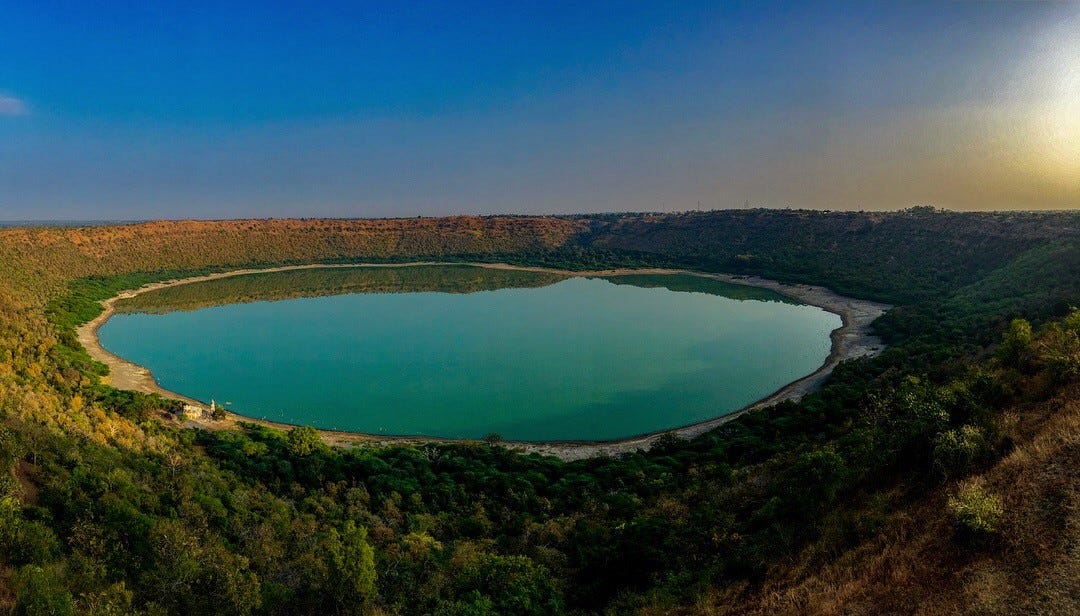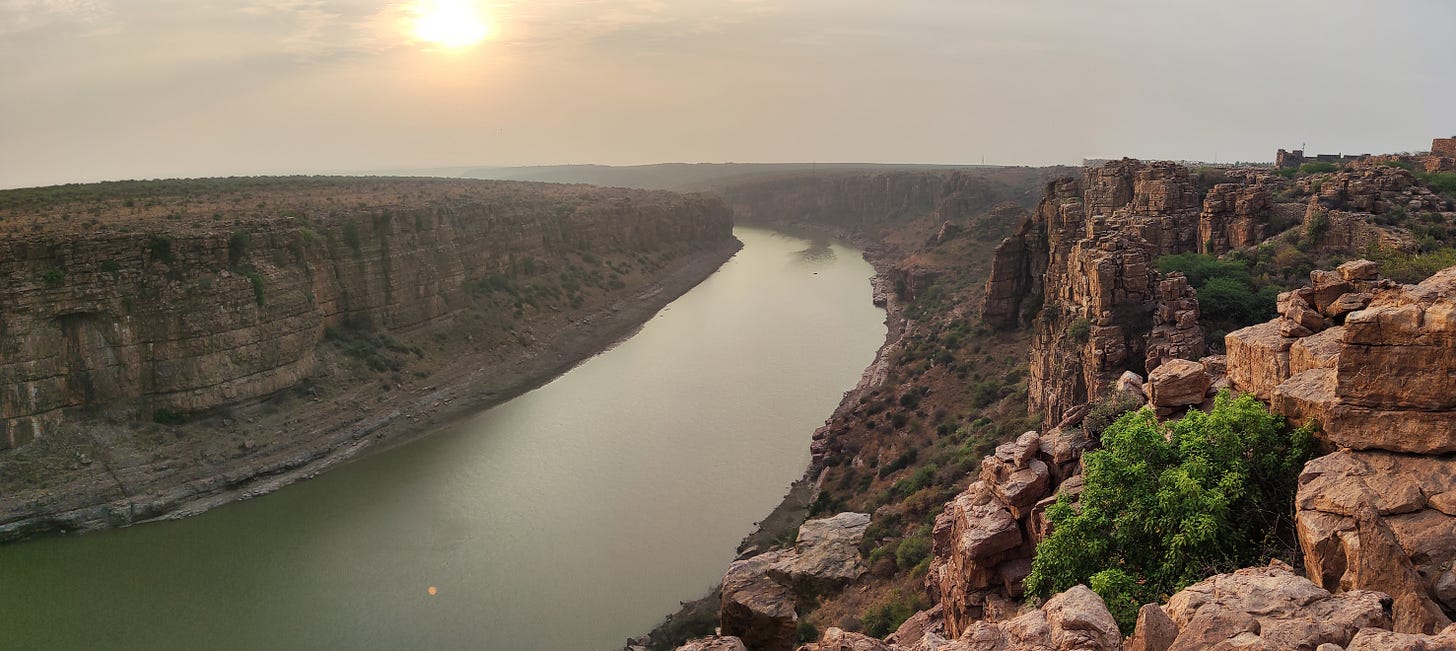Dear Reader,
If you’re a long-time subscriber, this post would look familiar. After all, it is a repurposed edition but I thought it would be fun to run it on Substack. This time, there are better images, if that helps you change your mind!
For those who are seeing this for the first time, it is a light-hearted attempt at deciding on India’s first-ever geopark. Hopefully, the geosite overviews will provide enough information for non-India-based readers to vote too.
With the limitations of space, I had to curb my list. I’ve tried to include a range of geo-formations, and varied up the states. Yet I’m sure to have missed a few. I look forward to your votes, and comments on what sites should’ve make the list.
Thanks,
Devayani
Did you know that while India boasts 43 UNESCO World Heritage Sites, none of our incredible geodiversity has been recognised as a UNESCO Global Geopark? A geopark is a single, unified geographical site or landscape of international geological significance, managed under the holistic concept of protection, education and sustainable development.
Efforts are underway to declare certain landscapes as geoparks, notably, the Dinosaur Fossil National Park in Bagh, Madhya Pradesh, and the Geological Survey of India has listed several geoheritage sites of national importance. Yet we have a long way to go in identifying, appreciating, and conserving landscapes before we think of creating public-facing sites for scientific education.
We need to start thinking beyond a single monument or artefact (too many of our fossils and minerals languish in museums, academic cupboards and storerooms), and consider entire landscapes — what are some of the stories about the formation of the Earth that we can study? How were landscapes shaped by the forces of Nature, and how did they, in turn, influence biodiversity over aeons? And lastly, how have landscapes defined the stories of human evolution, migration, and cultures?
This is a challenge for you, dear reader – you can only select ONE geosite to be crowned the ultimate geopark contender. Choose wisely!
Prepare for the EPIC GEOSITE RUMBLE! Here's a shortlist of captivating geosites. Run through the list below, and respond to the poll.
Ready to rumble?
Here’s an overview of the different contenders:
The Sundarbans, West Bengal
The Sundarbans stretching from West Bengal to Bangladesh, represent the largest
mangrove habitat in the world. Formed where the Hooghly, Ganges, Brahmaputra, Meghna, and other channels merge, the Sundarbans delta comprises 104 shifting islands - a dangerous landscape, and not just because of the tigers or crocodiles!
* Note: It was declared a UNESCO World Heritage Site in 1987, but has rich potential as a Geopark!
The Great Rann of Kutch, Gujarat
The multi-hued salt-encrusted Rann of Kachchh, in Gujarat, stretching into Pakistan, where the horizon shimmer like a mirage, which was once a navigable lake. In school trivia rounds, the Rann always featured as one of India's geological features that is visible from the Moon!
* Note: Dholavira, a Harappan site, located on an outcrop in the Great Rann, is a UNESCO World Heritage site, and the Wild Ass Sanctuary in the Little Rann is on the tentative list!
Lonar Crater, Maharashtra
Created when a meteor crashed into the Deccan Traps over 5 million years ago, the Lonar lake in Maharashtra changes colours through the year, due to its unique microbial ecosystems.
* Note: included in GSI's National Geo-Heritage Monument List
Gandikota Canyon, Andhra Pradesh
Sometimes called the 'Grand Canyon of India', Gandikota's spectacular pink-red granite and quartzite landscape, is a geoheritage wonder located in Andhra Pradesh. Lesser-known than many other geosites, the sheer scale and fractured facade is breathtaking - it also features fort ramparts, a granary, a juma masjid and a temple!
Hampi Inselbergs, Karnataka
Hampi's unusual landscape isn't the result of volcanism or upheaval, or of wind erosion (as some sources claim) but of slow, deep weathering by rainwater, along the cracks and crevices in the granite bedrock. The feature is known as an 'inselberg' - and it defines the ancient capital.
* Note: Hampi was declared a UNESCO World Heritage Site in 1986, but has rich potential as a Geopark!
Mawsmai Limestone Caves, Meghalaya
Mawsmai cave, located 3 kilometres to the south of Sohra/Cherrapunji, is the most-visited and well-illuminated limestone or karst cave in Meghalaya, created by percolating rainwater. Located within a sacred grove, it is protected by the local community - this is a great example of community conservation.
Bhedaghat Marbles, Madhya Pradesh
The iconic marble rocks at Bhedaghat, in Madhya Pradesh, lie along a gorge of the Narmada river. While the nearby Dhuandhar Falls, and the tiger sanctuaries see more tourism, Bhedaghat is popular on moonlit night.
Jog Falls, Karnataka
India's largest waterfall along the Sharavati river, Jog waterfalls in Karnataka, boasts 4 cascades when in full spate. While it might appear as a singular feature rather than an entire landscape, it encompasses various narratives: the geological genesis of the Deccan Traps, the cascading journey of rivers down the escarpment towards the coast, the presence of unique endemic species in the adjacent Sharavathi Valley Wildlife Sanctuary, and the adverse consequences of human activities like dam construction.
Nubra Valley, Ladakh
Nubra Valley is just one among many picturesque stopovers in Ladakh, yet it is a unique landscape sculpted by wind, river water, and ice, over millennia. While Ladakh's cold desert is often a contender for geosites, the cultural and geological aspects of Nubra Valley would make it an interesting geosite.

Chilika Lake, Odisha
Odisha's ephemeral Chilika lake is a assemblage of marine, brackish and freshwater ecosystem, that supports amazing biodiversity, particularly migratory bird species, and it is home to highly endangered Irrawaddy dolphin. Chilika lake features on the UNESCO's tentative list.
The limitations of Substack’s poll function meant I had to split the contenders into two lots. Please note only in one of the two polls, so we can decide a winner!
Which other geosites would you have liked to see in the rumble? Please chime in via the comments.















How to choose? All of them are so good.